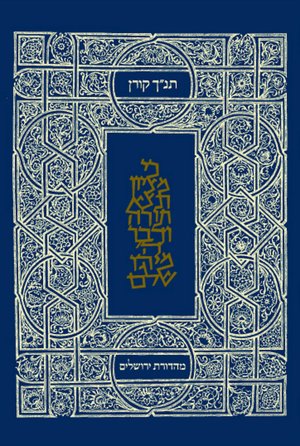The Koren Classic Tanakh: A Hebrew Tanakh for Every Use book
Par plum donald le vendredi, octobre 16 2015, 23:26 - Lien permanent
The Koren Classic Tanakh: A Hebrew Tanakh for Every Use by Koren Publishers


Download eBook
The Koren Classic Tanakh: A Hebrew Tanakh for Every Use Koren Publishers ebook
ISBN: 9789653010536
Format: pdf
Page: 1387
Publisher: Toby Press LLC, The
How do the Schottenstein and Steinsaltz editions stack up against each other? Classical Greek and Roman architectures were also often revived. He served as Halakha editor of the Koren Sacks Siddur and also practices international tax law. I need a classical opentype font that supports both Western and Hebrew encoding. The antediluvian Egyptians may have spoken Hebrew while Egyptians after the Dispersion spoke Egyptian, but continued to use hieroglyphics. Clark lives in Bet Shemesh, Israel. Bt it was $58 each, 2 for $45 each, and so on. It is intended to use that font . This means that each character represented a word, not a sound. Even the Koren typeface is only 99% automatic (VOLT couldn't compile any more code) and you'll need extra software for that 1% (we had some created for in-house use and is in alpha). A 13th-century Tanakh (Hebrew Bible) from the Lower Rhineland—where Jews had lived since Roman times—sits next to a ninth-century Christian Bible from a Breton abbey. The Holy City is referenced hundreds of times throughout Tanach (the Five Books of Moses, Prophets and Writings, also known as the Written Torah). According to the medieval authority Asher ben Yehiel, the answer is that the angels are in fact perfectly familiar with Aramaic, but think that using it is beneath them. The Jews' love of Jerusalem as Judaism's permanent capital stems from the Torah itself. Influenced by Celtic Alongside these manuscripts rests a large, 14th-century Koran, probably Turkish. The linear Here are things seldom seen, from a 14th-century Ashkenazic German prayer book to the first printed Mahzor Roma, the prayer book used in the Jewish Roman rite. The Catholic New American Bible (1970), the evangelical Protestant New International Version (1978), and the Jewish Publication Society Tanakh (1985) were among dozens of translations and annotated editions in print. SBL Hebrew is also a I've also cross-referenced with the JPS Tanakh. Use a capital initial when it refers to the scriptures collectively (Read your Bible), but a small initial when it refers to a copy of the book (three bibles) or is allusive (Wisden is the cricketer's bible). The Septuagint - the Greek translation of Tanakh in 150 BCE - has pretty much preserved the original forms of Hebrew words as how they were pronounced at the Maccabean period.